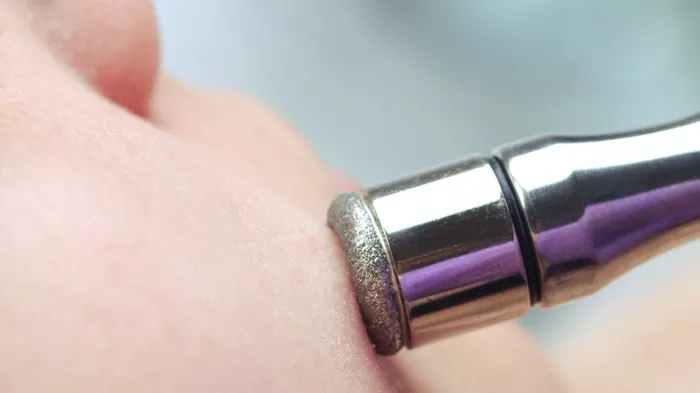Microdermabrasion and dermal fillers are two popular cosmetic treatments aimed at enhancing the appearance of the skin. Microdermabrasion is a non-invasive exfoliation technique that removes dead skin cells, while dermal fillers are injectable substances used to restore volume and smooth out wrinkles and fine lines. If you have undergone dermal filler treatment, you may be wondering whether it is safe to have microdermabrasion after dermal filler treatment. In this article, we will explore the compatibility of these treatments and provide you with insights to help you make an informed decision.
Understanding Microdermabrasion and Dermal Fillers
Before delving into the compatibility of these treatments, let’s have a brief overview of microdermabrasion and dermal fillers:
Microdermabrasion: Microdermabrasion is a non-chemical exfoliation technique that uses a specialized device to gently remove the outer layer of dead skin cells. This process reveals smoother, more radiant skin and promotes cell turnover. It is commonly used to improve skin texture, reduce the appearance of fine lines and wrinkles, and address hyperpigmentation.
Dermal Fillers: Dermal fillers are injectable substances, typically made of hyaluronic acid, that are used to restore volume, fill in wrinkles and lines, and enhance facial contours. They can address concerns such as hollow under-eye areas, nasolabial folds, thin lips, and volume loss in the cheeks.
Can Microdermabrasion Be Performed After Dermal Fillers?
The compatibility of microdermabrasion and dermal fillers depends on various factors, including the timing of the treatments, the specific areas being treated, and the type of fillers used. Here are some considerations to keep in mind:
1. Timing of the Treatments
It is generally recommended to wait at least two weeks after receiving dermal filler injections before undergoing microdermabrasion. This waiting period allows the filler to settle and integrate into the treated areas properly. Microdermabrasion involves exfoliation and mechanical manipulation of the skin, which can potentially disrupt the newly injected filler if performed too soon after the procedure. Waiting for a couple of weeks allows the filler to stabilize and minimizes the risk of displacement or uneven distribution.
2. Specific Areas Being Treated
The compatibility of microdermabrasion and dermal fillers also depends on the specific areas of the face being treated. Microdermabrasion is commonly performed on the outermost layer of the skin, primarily targeting the epidermis. Dermal fillers, on the other hand, are typically injected into deeper layers of the skin or subcutaneously to address volume loss or specific facial features.
In general, microdermabrasion can be safely performed on areas of the face where fillers have not been recently injected. For example, if you have received dermal fillers in your lips, it is best to avoid microdermabrasion in that specific area immediately after the filler treatment. However, microdermabrasion can be performed on other parts of the face, such as the forehead, cheeks, or chin, as long as an adequate amount of time has passed since the filler injections.
3. Type of Dermal Fillers Used
Different types of dermal fillers have different consistencies and properties. Some fillers, such as thicker or more robust ones used for deeper volumizing, may require more time to settle and integrate into the tissues. Other fillers, like those used for fine lines or superficial corrections, may have a quicker stabilization period. It is important to consult with your healthcare provider or dermatologist, who can assess the specific fillers used and provide guidance on the appropriate timing for microdermabrasion.
Consultation with a Skincare Professional
To ensure your safety and the best possible outcomes, it is crucial to consult with a skincare professional, dermatologist, or plastic surgeon who has expertise in both microdermabrasion and dermal fillers. They can evaluate your specific situation, including the type and location of the fillers used, and provide personalized advice based on your needs and goals.
During the consultation, communicate openly with the skincare professional about your previous treatments, including the date of your dermal filler injections. They will be able to assess the compatibility of microdermabrasion with your recent fillers and determine the appropriate waiting period before proceeding with the treatment.
Alternatives to Microdermabrasion
If you have recently received dermal fillers and are interested in a skin exfoliation treatment, there are alternatives to microdermabrasion that may be more suitable. For example, chemical peels, which involve the application of a chemical solution to the skin to exfoliate and rejuvenate the complexion, can be an option. Your skincare professional can guide you in selecting the most appropriate treatment based on your specific situation and desired outcomes.
Conclusion
Microdermabrasion and dermal fillers can both contribute to achieving a more youthful and refreshed appearance. However, it is important to consider the timing and specific circumstances when combining these treatments. Waiting for a sufficient period of time after receiving dermal fillers allows for proper settlement and integration, minimizing the risk of complications.
Consulting with a skincare professional who specializes in both microdermabrasion and dermal fillers is crucial. They can assess your individual case, take into account the type of fillers used and the specific areas treated, and provide personalized recommendations for optimal results.
Remember, every individual’s situation is unique, and the compatibility of microdermabrasion and dermal fillers may vary. By seeking professional guidance and following their advice, you can make informed decisions and safely navigate the world of cosmetic treatments to achieve your desired aesthetic goals.


